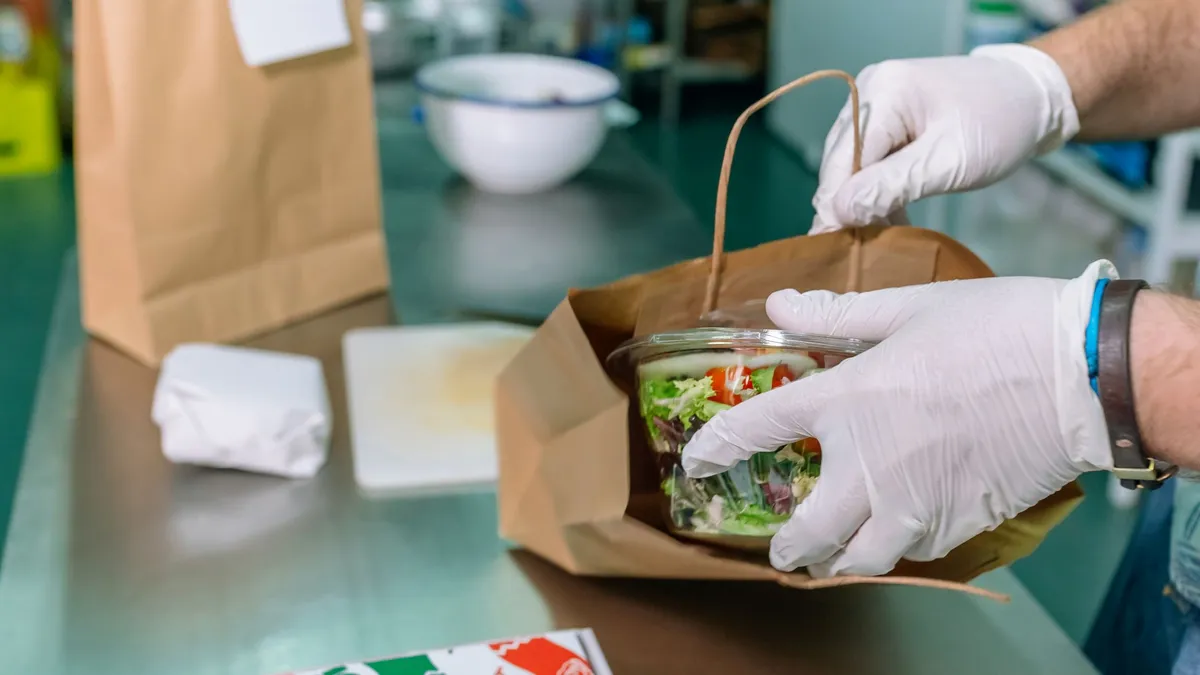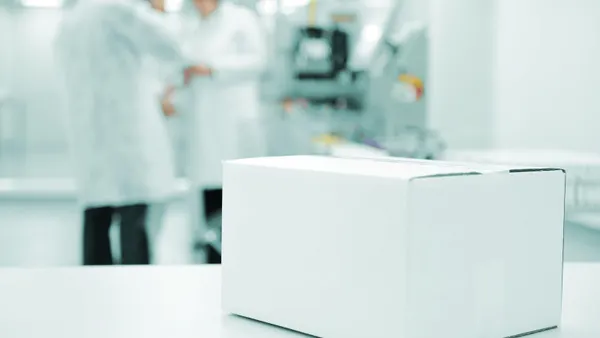Keurig Dr Pepper, one of the United States’ largest beverage companies, made strides in 2022 in reducing virgin plastic use and implementing postconsumer recycled content in plastic packaging. Meanwhile, the share of its packaging portfolio considered recyclable or compostable fell, according to KDP’s corporate responsibility report released last week.
In 2022 KDP made incremental progress on reducing its own Scope 1 and 2 emissions, as well as Scope 3, or value chain, emissions. KDP said packaging accounts for 18% of its Scope 3 emissions. KDP’s own packaging crosses a diversity of substrates: in 2022, 34% was paper or cardboard, 26% was PET bottles and 14% was aluminum and steel, among other categories. By next year, KDP wants to engage more of the bottlers and suppliers that account for half of its Scope 3 emissions to set a science-based target.
Packaging sustainability goals and levels achieved
| Goal | 2020 | 2021 | 2022 |
| Make all packaging compostable or recyclable by 2025 | 90% | 92% | 90% |
| Use 30% postconsumer recycled content across all packaging | 22% | 24% | 24% |
| Use 25% postconsumer recycled content in plastic packaging | 2% | 11% | 18% |
| Achieve 20% virgin plastic reduction across plastic packaging | 1% | 6% | 11% |
KDP attributed the slight decline in its overall level of recyclable or compostable packaging to a change in its reported packaging mix. 2022 saw a lack of refillable glass purchases due to surplus from the prior year and customer returns. Between now and 2025, the company is focused on addressing the remaining PET bottles in its portfolio.
The company pointed to PCR and lightweighting initiatives as reasons for progress in reducing virgin plastic use.
What’s next
Beyond 2030, the company is aiming to scale low-carbon packaging solutions across its portfolio of brands.
For Snapple, KDP said that during 2022 it made all 16 oz. packaging recyclable, “enabled by removal of metal closures and paper labels.” Additionally, all Core Hydration bottles and some sizes of Snapple were converted to 100% recycled PET, boosting recycled content stats across its plastic packaging portfolio. The company is looking beyond plastic for bottles; the report states KDP conducted lab and pilot-scale trials in 2022 of a bottle made from paper and organic materials.
In coffee, the company began lightweighting K-Cups — whose recyclability claims have prompted litigation — for Keurig machines, a change it says could reduce the plastic packaging used in each pod by about 18%.
As for ongoing challenges, KDP called out having to navigate “the lack of uniformity and underdevelopment of recycling and reuse/refill infrastructure as well as the patchwork of state and federal policies to support our packaging circularity strategy, including availability of post-consumer recycled materials.”
Going forward, KDP foresees further policy engagement, noting “federal packaging collection policy or other national-level mechanisms that harmonize efforts to build a circular economy” as a key opportunity. The company’s CEO and chief sustainability officer wrote that they “look forward to supporting the implementation of important legislation passed this past year, including laws establishing extended producer responsibility programs.”















